A neurological symptom in which the image of objects blurs and seems to split into two is often associated with a state of intoxication, and is the subject of jokes and anecdotes. In fact, a double picture can be a symptom of serious pathologies.
Double vision can be caused by diseases of the eye itself (or both), or it can be a symptom of a general disease of the body. In any case, if you see double, then the person experiences panic and tension that accompanies headache, dizziness. What causes such visual impairment and what can be done about it?
In some cases, this can only be treated with surgery. Conservative treatment and homeopathic remedies are effective when pathological vision is caused by a general disease.
Photo 1: Double vision has a medical name - diplopia. This pathology can be congenital or acquired. Source: flickr (sameer).
Double vision - clinical picture
Double vision is distinguished by the type of image disturbance. Diplopia can be:
- Binocular. Double vision, because each eye produces its own image. The pathology is associated with deviation of the visual axis of one eye. It turns out that each eye produces one image, but the process of combining it is disrupted. With both eyes, a person simultaneously sees two images of one object.
- Monocular. With this visual impairment, a double image is produced in one eye, but in different parts of the retina. Closing one eye does not help correct vision here.
- Cross – when the image is projected diagonally and does not line up.
- Paralytic – occurs due to paralysis of the eye muscles.
Depending on which eye muscles are affected, double vision is distinguished:
- two images of the same object are located side by side when the work of the rectus muscles is impaired;
- a person sees images one above the other when the work of the oblique muscles is impaired.
Additional symptoms of double vision
- strabismus;
- pain when moving the eyes;
- pain in the eye sockets;
- nausea;
- disturbance of orientation in space, since a person cannot correctly assess the location of objects and the distance to them;
- prolonged dizziness, general weakness;
- headache.
Nausea, headache and dizziness
We see with our eyes, but the information that comes through the organs of vision is processed by the brain. Therefore, disruption of the part of the brain that is responsible for processing visible information can lead to the fact that the visible image begins to double, and additional symptoms are necessarily present. A condition where, with double vision, there is also a feeling of nausea, pain and dizziness, it is usually associated with a problem of dysfunction nervous system: for example, concussion, post-stroke conditions.
Having a stroke can negatively affect the brain when the area of the brain responsible for vision is affected. This usually manifests itself as double vision of objects when looking directly, and not when the person moves or turns the head, as happens with brain injuries.
If at the same time a nervous tic also appears, it is necessary to exclude a brain tumor, which can disrupt the functioning of the part of it that is responsible for displaying the external picture; this usually happens if the tumor is located next to this part.
If double vision is also accompanied by mental changes in personality, as well as disturbances in speech and gait, this may be caused by the development of multiple sclerosis.
Headache and double objects may be a consequence of overstrain, usually associated with prolonged mental work - reading, working at a computer, when the brain is forced to process a large number of information.
 Photo 2: Diplopia practically deprives a person of a normal life. Persistent attempts to combine the picture cause enormous stress and do not yield results. Source: flickr (lanatrazoppadue).
Photo 2: Diplopia practically deprives a person of a normal life. Persistent attempts to combine the picture cause enormous stress and do not yield results. Source: flickr (lanatrazoppadue). Only a doctor can help in such a situation. The only way restore vision - at the first symptoms, consult an ophthalmologist.
Causes of double vision
All causes of diplopia can be divided into three groups: traumatic, eye diseases, and general diseases.
Causes of monocular disorders:
- trauma, dry cornea;
- subluxation of the lens;
- cataract;
- astigmatism.
Binocular disorders provoke:
- strabismus;
- hypertension;
- diabetes;
- thyroid diseases;
- myasthenia gravis;
- aneurysm;
- multiple sclerosis;
- vascular pathologies;
- infectious diseases;
- head injuries.
Note! First aid for this disease is diagnosis. Treatment for diplopia depends entirely on what exactly caused it.
For diagnosis, a patient survey is conducted, based on the results of which the examination strategy is determined. This could be: blood tests, x-rays, MRI.
Treatment
Treatment can be medication if double vision is caused by diabetes, hypertension or other diseases. Restoration of vision depends entirely on the treatment of the general disease.
Double vision can be “removed” by correcting vision with lenses or glasses for astigmatism.
Operative – when visual impairment is associated with traumatic injuries or pathological changes in the eye. For example, surgery to replace the lens for cataracts.
Homeopathy for double vision
Botulinum– the botulism nosode is used in the treatment of double vision, if the cause of this lies in the general weakness of the muscles of the body.
Fact! The botulism nosode is called an ex-nosode because for a long time it has been banned for use in some countries.
Aurum- double vision due to the fact that the upper space is inaccessible for normal vision.
Agaricus- blurry images of objects that appear very dim.
Arnica– visual impairment caused by eye damage or concussion.
Gelsemium– visual impairment during pregnancy with toxicosis. Double vision associated with dizziness, blurred vision.
Conium, Graphites- double letters when reading, “dancing” of the text, lacrimation.
Luesinum– used when the image of one object bifurcates along the vertical axis.
Medorrhinum- prescribed to patients with hallucinogenic vision disorders, when objects not only double, but also change size and color. The patient sees unclear spots, a cloudy cloud.
Eugenia jambosa– effective when the patient manages to focus the double image by force of will.
Oleander– objects appear double only when looking down at your feet.
Double vision is an eye symptom in which two images of the same object appear. The medical term for double vision is diplopia.
Double vision is sometimes confused with blurred vision. Fog in the eyes is a blurred vision where a person sees one unclear image, while double vision is the perception of two images when there is only one.
Double vision manifests itself in different ways. Some patients may experience double vision sometimes, while others may experience double vision all the time. Some people say they experience double vision when they only look in a certain direction (horizontal or vertical).
Symptoms of double vision
Dual images may appear side by side or overlap each other. Double vision may vary depending on the gaze or tilt of the head when turning to the side. Based on the nature of vision, diplopia is of two types:
● Monocular. Double vision persists when the healthy eye closes.
● Binocular. When one eye is closed, double vision disappears. Double vision appears only when a person looks with both eyes. In this case, the image doubles either vertically (vertical ghosting) or horizontally (horizontal ghosting).

● Physiological. Normally, with binocular vision (vision with two eyes), only the object on which the gaze is focused does not appear double. An object that is located further or closer to the point of fixation of the gaze may appear double. The brain usually suppresses these double images and we do not notice them. However, children may sometimes notice this and complain of double vision.
There are many causes of double vision, ranging from the most minor to the very serious. life-threatening person.
Causes of double vision in one eye (monocular diplopia)
1.Problems in the cornea of the eye. Infections of the cornea (keratitis), scarring of the cornea, keratoconus, pterygium, often cause double vision in only one eye. When the affected eye is closed, the double vision goes away.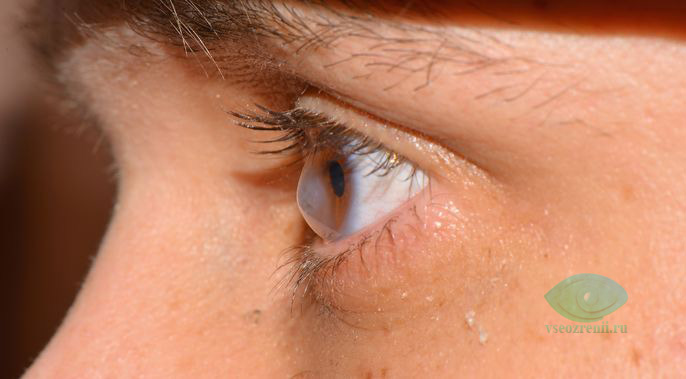
2.Cataract. In some cases, clouding of the lens can cause double vision, especially noticeable when reading.
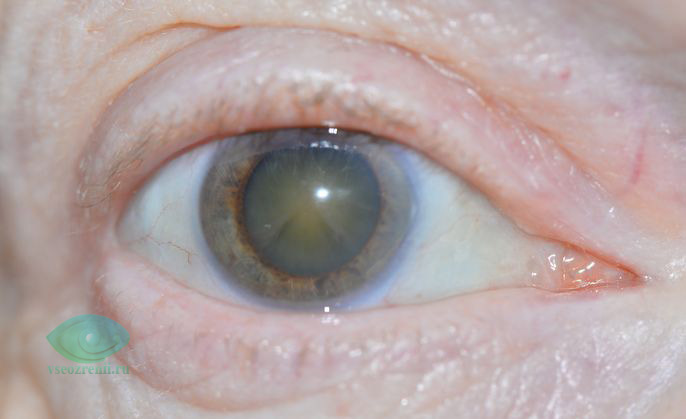
3.Astigmatism. May lead to the development of double vision.
4.Dry cornea. Drying of the cornea sometimes leads to the development of double vision. Treatment is aimed at the use of moisturizing drops.
5.Lens luxation. Dislocation of the lens from its place leads to visual distortions and double vision. Surgical treatment is required.
Causes of double vision in both eyes (binocular diplopia)
The following diseases may cause double vision:1. Strabismus is accompanied by a symptom of ghosting, because the visual axes do not focus on the object in question, i.e. eyes look in different directions.

2. Thyroid disease. Pathology of the thyroid gland leads to weakening of the external motor muscles of the eye.
3.Hypertension and other vascular problems. Double vision and dizziness are a common symptom of cerebrovascular accidents (stroke).
4.Diabetes. Damage to the nerves in diabetes that control eye movements leads to double vision. 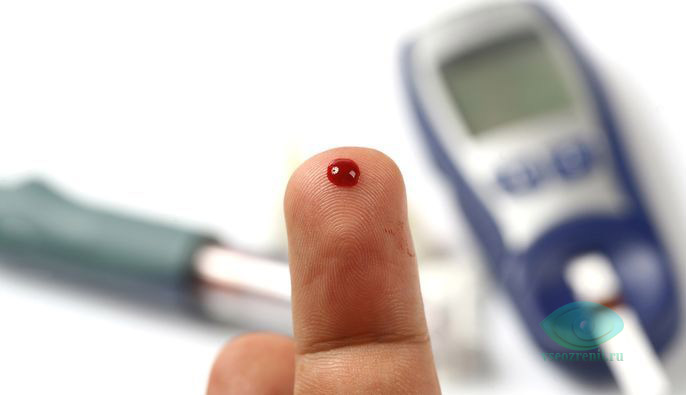
5.Myasthenia gravis is an autoimmune neuromuscular disease in which muscles, including the eye muscles, become weak and wasted.
6.Multiple sclerosis- a disease of the central nervous system (CNS), in which cells in the brain and spinal cord are attacked by a person’s own immune system. This is why Multiple Sclerosis is known as an autoimmune disease.
7.Aneurysm- occurs when part of a blood vessel (artery) disintegrates. If the aneurysm is located in the brain, double vision may become one of the symptoms of this disease.
8.Injuries - head bruises(TBI) can sometimes cause damage to the muscles in the orbit (eye socket), or damage to the nerves that control eye movements. Therefore, double vision often occurs after a head injury.
Temporary double vision can be caused by:
●Alcohol intoxication●Severe concussion
●By taking some medicines(antiepileptic, anticonvulsant)
●visual fatigue or fatigue
Treatment of double vision.
Treatment for double vision depends on the cause that caused this symptom.
For example, for astigmatism, corrective glasses or contact lenses are prescribed.
In addition, it is possible laser correction vision. If the cause of double vision is cataract, then surgery is performed to replace the lens.
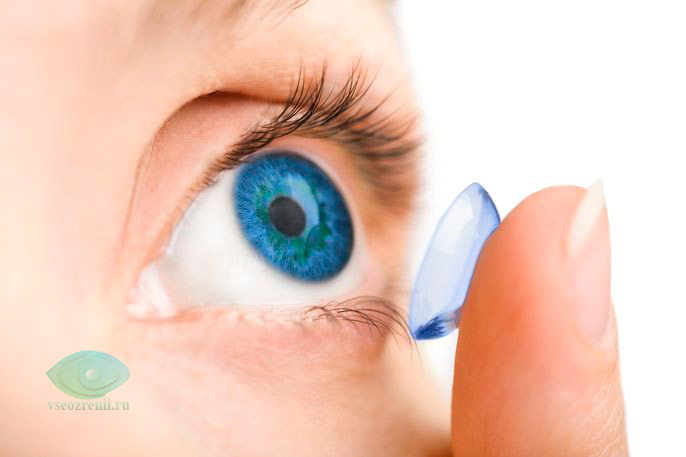
Patients with diabetes who adhere to treatment protocols have more low risk development
double vision compared to patients who do not.
Double vision or diplopia is a symptom of a certain pathological process in the body, which is not always a sign of an ophthalmological disorder. Prolonged manifestation of this symptom can lead to a significant deterioration in a person’s vision. In addition, people with this disorder experience difficulties in Everyday life. Double vision of an object or a specific object in the eyes is caused by a deviation of the visual axis.
Etiology
It should be noted that the observation of double objects in the eyes is a nonspecific symptom, and therefore can manifest itself in almost any ailment, including head injuries. Clinicians identify the following predisposing factors for the development of such a disorder:
- mechanical damage to the head or eye socket, which led to pinching of the extraocular muscles or optic nerve;
- paralysis or significant weakening of the extraocular muscles;
- compression of the oculomotor nerve due to an aneurysm.
Common etiological factors include the following:
- toxic or drug poisoning;
- psychoneurosis;
- psychiatric disorders;
- hyperfunction of the thyroid gland;
- infectious diseases (most often these are);
- intracranial tumors;
- autoimmune pathologies;
- complications after surgery on the brain or vision organs;
- excessive alcohol consumption or drug use.
In some cases, a person may experience double vision during the period. As a rule, as the condition stabilizes, this symptom disappears.
Symptoms
The general clinical picture, in this case, is quite clear - everything that comes into the field of vision is seen blurry and in larger quantities than it actually is. However, depending on the underlying factor, the symptoms may be supplemented by specific signs.
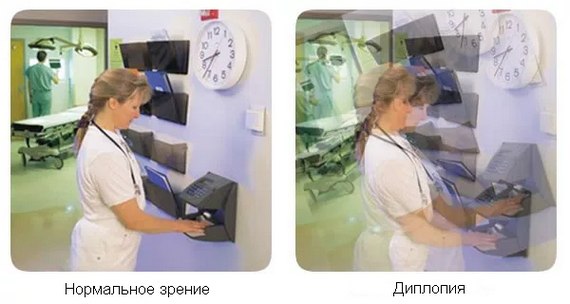
If the reason for the development of double vision in a person is toxic or drug poisoning, then the following characteristic signs may appear:
- impaired clarity of consciousness;
- pre-fainting state;
- symptoms (, co, unstable stool);
- reduced or ;
If you experience such symptoms, you should urgently seek help. medical care, since in this case we are not talking about complications, but about a high risk of death.
Double vision with osteochondrosis is accompanied by the following clinical picture:
- double vision appears periodically, especially when tilting the head or the entire body;
- the above symptom may be accompanied by darkening, spots or circles before the eyes;
- weakness and decreased sensitivity in the hands;
- lack of coordination;
- headaches, dizziness;
It should be noted that such a clinical picture may also be present with. Therefore, it is unwise to independently compare the causes and make a decision on treatment, since serious complications are possible.
In infectious diseases, symptoms can manifest themselves in the form of the following specific signs:
- increased body temperature;
- nausea, sometimes with vomiting;
- weakness, for no apparent reason;
- increased sweating, especially at night;
- for tuberculosis - which lasts more than 3 weeks;
- with meningitis - severe headaches, hallucinations.
Regardless of what symptoms complement diplopia, you should consult a doctor as early as possible. Self-medication is unacceptable.
Diagnostics
The diagnostic program may include the following activities:
- detailed physical examination and collection of medical and life history;
- slit lamp eye examination;
- ophthalmoscopy;
- color test;
- standard laboratory tests (blood and urine collection for general examination, biochemical blood test);
- CT and MRI of the brain;
- cardiometry;
- electromyography.

The diagnostic program may vary depending on the current clinical picture and the suspected etiological factor. It is important that if the patient used any medications or underwent therapeutic procedures before contacting a doctor, he should be notified of this before the diagnosis begins.
Treatment
Basic therapy will depend entirely on the diagnosis. Why a child or adult sees double can only be said for sure after an examination.
Depending on the underlying cause, treatment can be either conservative or surgical.
Drug treatment for this disorder may include the following:
- antibiotics;
- anti-inflammatory;
- glucocorticoid;
- to stabilize blood pressure.
If the cause of double vision is a neoplasm, the first step is surgical removal of the tumor or hematoma. In such cases, a subsequent period of rehabilitation is required.
In this case, it is impossible to identify targeted methods of prevention, since this is a nonspecific symptom of a certain pathological process.
“Double vision” is observed in diseases:
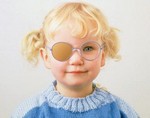
Amblyopia or lazy eye syndrome in medicine refers to decreased vision in one or both eyes, which has nothing to do with improper functioning of the optic nerve. Usually, during a diagnostic eye examination, the doctor does not identify the causes of such a disease. As the pathology progresses, the sharpness of vision in one of the eyes decreases due to a violation of the full and proper operation brain and visual apparatus.
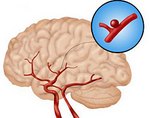
A cerebral aneurysm (also called an intracranial aneurysm) appears as a small abnormal formation in the blood vessels of the brain. This compaction can actively increase due to filling with blood. Until it ruptures, such a bulge is not dangerous or harmful. It only exerts slight pressure on the organ tissue.
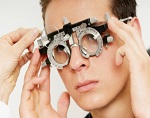
Astigmatism is a refractive error associated with the irregular shape of the cornea or lens of the eye. Astigmatism, the symptoms of which include distorted vision of lines and objects, is the most common cause of poor vision, and it can be nearsighted, farsighted, or even combined. In the latter case, farsightedness is noted along one axis of perception, and myopia along the other.

Eye astigmatism is a visual disorder in which the visual focus shifts. As a result of such a violation, the image on the retina is transmitted with distortions - it can be blurry, curved or double. Astigmatism in children is observed quite often. However, it is also worth noting that astigmatism in children under one year of age may be physiological in nature and not require correction.
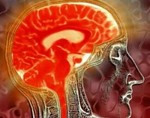
Viral encephalitis is an inflammatory process of the brain, which is accompanied by damage to the membranes of the spinal cord and the peripheral nervous system. The disease is caused by the penetration of viral microorganisms into this area. In most cases, the cause is the herpes virus, as well as diseases characteristic only of children, in particular measles, as well as a range of bacteria that are transmitted through insect bites. There are several types of encephalitis - primary and secondary. Often the encephalitis virus does not live long, but can nevertheless become life-threatening.
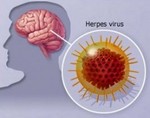
More than 80% of the world's population is infected with the herpes simplex virus, but in the body of most people it lies dormant and is activated only during periods of decreased immunity. Herpetic infection mainly affects the mucous membranes of the eyes, lips, external genitalia and skin, and at first glance seems quite harmless, since it is relatively easy to treat, but especially severe cases During the course of the disease, it can disrupt the functioning of the central nervous system and cause the development of encephalitis.

Glucosuria is often a congenital disorder, but can occur under the influence of other factors. It is characterized by the fact that glucose is excreted from the body along with urine, but nevertheless the blood sugar level remains within normal limits. This process occurs because the absorption of glucose by the kidneys, which enters the blood, is disrupted. This disease is usually not accompanied by any symptoms. The diagnosis is confirmed by urine tests, which reveal a high concentration of sugar. Sometimes when diabetes mellitus or during pregnancy, such a disorder may progress.
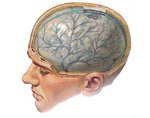
It’s so strange when you start to notice that everything is seeing double. What is this due to: fatigue, stress or serious illness? Should I see a doctor or will it go away on its own? Why is this dangerous and what could delay cost?
Split image - what is it? Causes of occurrence.
Binocular vision disorder characterized by double vision visible to humans image is called diplopia. This phenomenon is associated with the deviation of the optical axis of one eye, as a result of which the rays from the object in question do not fall on central part retina. Those. the image of an object, visible to such an eye, seems to be located next to it. Most often, this phenomenon goes away if one eye is closed (binocular diplopia). But it happens (rarely) that the image is double in one eye and when the second is closed, the double vision remains (monocular).
Diplopia is one of the methods for detecting visual hallucinations. If you shift the optical axis of the eye by pressing on it with your finger, then real objects will split into two, but hallucinations will remain normal.
Diplopia or double vision can be a congenital or acquired pathology. In the first case, it explains strabismus - the vertical deviation of the optical axis of one eye from the axis of the second, due to which the synchrony of the image seen by both eyes is impossible. In the second case, the pathology may be associated with mechanical damage (trauma) to the eye or skull, a disruption of the relationship between the optic nerve and the part of the brain responsible for vision. This phenomenon is also associated with weakening or paralysis of the optic nerves and muscles, leading to immobility of the eye in one direction or another.
Doubling of objects can be a symptom of inflammatory infectious diseases, botulism, the development of neoplasms and tumors in the eyes or brain.
Here sample list diseases with diplopia as symptoms:
- Neuralgia and central nervous system damage (multiple sclerosis, stroke, meningitis).
- Neuritis.
- Diabetes mellitus, diabetic retinopathy.
- Intoxication.
- Rubella, diphtheria, mumps, tetanus.
- Vasculitis.
- Diseases of the cardiovascular system or thyroid gland.
- Flu.
By the way, the cause of double vision in children may be frequent viewing of films in 3D format. After such a movie, the child’s gaze may be disrupted for some time.
Symptoms and treatment of diplopia
The very first sign of pathology is a split in the visible image. You can add dizziness and the inability to determine the location of an object. Depending on the location of the pathology, the bifurcation can be parallel - in case of damage to the rectus muscles, vertical (on top of each other) - in case of damage to the oblique muscles. If diplopia is associated with muscle paralysis, then double vision occurs in the direction of its location, and the eye itself cannot move in this direction. When diplopia is associated with the development of a disease, the corresponding symptoms are added.
Treatment of pathology is primarily aimed at eliminating the causes associated with its occurrence. If necessary or to eliminate discomfort, spectacle correction is prescribed during treatment. It consists of wearing special glasses that compare points of view together. The downside of spectacle correction is a decrease in visual acuity. To avoid this, visual gymnastics are additionally prescribed.
In some cases, diplopia can be treated surgically. The purpose of this treatment is to change the length of the eye muscle, suturing the tendon to give the eyeball the correct position.
Emergency care in case of double vision also depends on the cause of its occurrence. It is not always possible to determine it yourself, so it is advisable to call “ ambulance" If it is a skull injury or symptom infectious disease, then the patient will be urgently taken to the appropriate department of the hospital. In other cases, the need for hospitalization is determined by the doctor.
As you can see, double vision is not such a harmless phenomenon. Therefore, if signs of diplopia appear in yourself or your child, it is advisable to immediately consult a specialist. There is no need to wait for the disorder to go away on its own or self-medicate. After all, vision is a gift, without which life will not be joyful at all, so it must be protected.
What do you think about this? Have you ever encountered a similar phenomenon? Share your opinion or experience in the comments to the article! If the article was interesting or useful to you, write about it!
Double vision is commonly called diplopia in medical circles. This phenomenon is characterized by the fact that double vision in the eyes, its blurriness and unclear contours are observed. This symptom, as a rule, is a manifestation of some disease, but it can also be congenital in a person. With diplopia, a person feels quite strong discomfort, since a double image very tires the eyes.
When a person has normal vision, the image is focused at one point, and the brain forms a complete picture. But if you see double, two silhouettes appear simultaneously, which seem to overlap each other. Some patients note blurriness of the image; this occurs if the discrepancy between the contours of the images is insignificant.
Causes of double vision
If double vision, reasons may be different: most often it is a head injury or concomitant pathologies. As a rule, they are affected eye muscles or the nerves that innervate them.
The most common pathologies:
- motor dysfunction;
- damage to the oculomotor nerve (infectious diseases);
- compression of the oculomotor nerve;
- paresis, paralysis of the muscles responsible for eye movement.
Diseases that may be accompanied by double vision:
- A common cause of double vision is neurology and diseases of the central nervous system, such as multiple sclerosis, meningitis, stroke, brain tumors.
- Lesions of the peripheral parts of the nervous system: neuritis, diabetic neuropathy.
- Neoplasms of the orbit.
- Head and eye injuries.
- Intoxication. In case of poisoning with toxic substances dizzy, seeing double.
- Diseases associated with damage to the cardiovascular system.
- Infectious diseases such as: rubella, tetanus, diphtheria, mumps.
- Vasculitis.
- Diabetes. In the presence of this disease, secondary diplopia may develop.
- Thyroid diseases.
7. General diseases. Diplopia often occurs during febrile conditions with influenza and ARVI.
Diagnosis of diplopia
If you are familiar with firsthand symptoms - double vision and dizziness, you should consult an ophthalmologist. In addition to standard ophthalmological procedures, such as visometry, ophthalmoscopy, etc., it may be necessary to perform a computed tomography scan of the head and ultrasound of the eyeballs. The doctor will identify the cause of diplopia and, if he considers it necessary, will refer you for examination to another specialist: a neurologist, oncologist, traumatologist, endocrinologist, infectious disease specialist, rheumatologist.
Treatment of diplopia
Treatment of this pathology is always aimed at eliminating the cause that causes this condition. That is, you need to understand what causes it, horizontal or diagonal, and begin treating the disease.
Prismatic correction is also performed, which helps reduce the patient’s discomfort while the treatment is not yet completed. The patient is offered special glasses that have prismatic lenses that combine points of view together, thereby stopping double vision. However, there is a minus - visual acuity decreases.
If you see double vertically, horizontally, diagonally, use special exercises to increase visual acuity. They should be performed 3 times a day and are very effective in cases of partial diplopia.
Sometimes it is necessary to use surgical treatment, the purpose of which is to change the length of the muscle, suturing the tendon in order to ensure that the eye stays in the correct position.
If the child sees double, and he constantly complains of discomfort and dizziness, you should immediately go to the ophthalmologist. Remember, timely detection of the disease is the main condition effective treatment and no adverse effects. If you regularly notice that you have double vision, do not try to cope with this phenomenon on your own, it is better to see a specialist. We all know how important vision is in a person’s life, and we understand that you can’t joke with your eyes. Be healthy, and may the world around you be clear and colorful!
Why do I see double?
 Double vision is manifested by seeing an image in duplicate or blurring the contours of an object (it doesn’t double, but it doesn’t seem to completely move apart in different sides). Distinguish vertical double vision, horizontal and diagonal. It is important to estimate the distance between two images of the same object and the eye positions at which this distance is maximum and minimum. Neurology is responsible for double vision. The main causes and diseases that lead to double vision in a child or adult are presented in the table.
Double vision is manifested by seeing an image in duplicate or blurring the contours of an object (it doesn’t double, but it doesn’t seem to completely move apart in different sides). Distinguish vertical double vision, horizontal and diagonal. It is important to estimate the distance between two images of the same object and the eye positions at which this distance is maximum and minimum. Neurology is responsible for double vision. The main causes and diseases that lead to double vision in a child or adult are presented in the table.
|
Damage to the central nervous system (brain centers responsible for the work of the extraocular muscles) Common self-medication mistakes Self-medication will not help, and constant double imagery is very painful for the psyche. |

